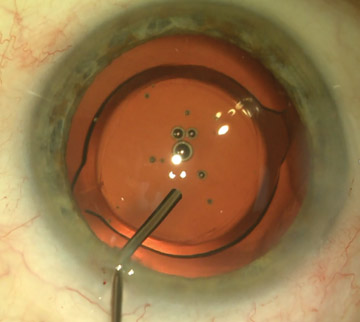John Hovanesian, MD, an ophthalmologist at Harvard Eye Associates in Laguna Hills, Calif., sends all his cataract patients opened-ended survey questions, asking them to share both the positives and negatives of their surgical experience. Unprompted, most patients complain about the difficulty of complying with the three-drop regimen — consisting of an antibiotic, steroid and NSAID — they're prescribed to improve post-op healing.
Eyedrops remain the most common form of medication delivery but that doesn't mean they provide the most benefit to patients, who often struggle to complete prescribed regimens. "Confusion is more of an issue than compliance," says Richard Hoffman, MD, clinical associate professor of ophthalmology at the Casey Eye Institute of Oregon Health and Science University in Portland. "We instruct patients to apply post-op drops four times a day until their follow-up visit, and direct them to stop only the antibiotic drops after day five. Some patients have instead stopped applying all of the drops by the time they come to the clinic."
The movement toward dropless cataract surgery continues. "It's exciting to see industry understand that post-op drop regimens are a problem that needs to be solved and is taking steps to develop solutions that reduce or even eliminate the number of drops patients need to administer after surgery," says Dr. Hovanesian.
.svg?sfvrsn=be606e78_3)

.svg?sfvrsn=56b2f850_5)